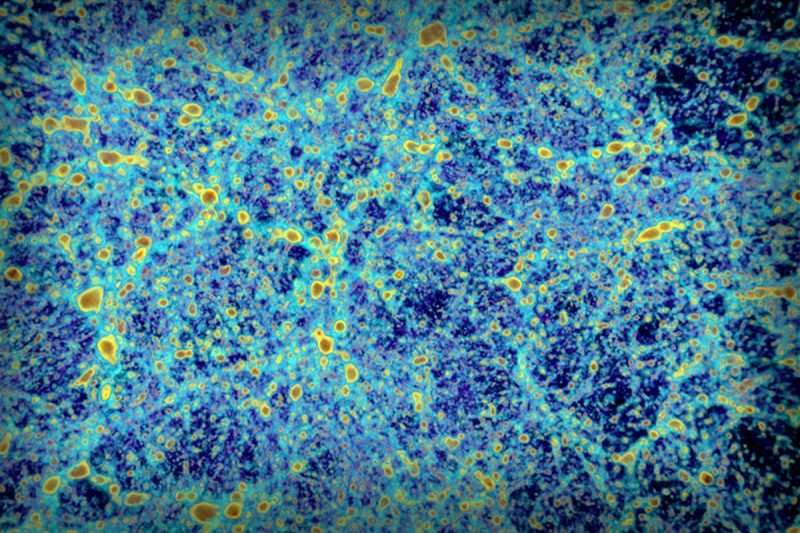Large-scale simulations could shed light on the 'dark' elements that make up most of our cosmos

If you only account for the matter we can see, our entire galaxy shouldn't exist. The combined gravitational pull of every known moon, planet, and star should not have been strong enough to produce a system as dense and complex as the Milky Way.
So what's held it all together?
Scientists believe there is a large amount of additional matter in the universe that we can't observe directly – so-called "dark matter." While it is not known what dark matter is made of, its effects on light and gravity are apparent in the very structure of our galaxy. This, combined with the even more mysterious "dark energy" thought to be speeding up the universe's expansion, could make up as much as 96 percent of the entire cosmos.
In an ambitious effort directed by Argonne National Laboratory, researchers at the Biocomplexity Institute of Virginia Tech are now attempting to estimate key features of the universe, including its relative distributions of dark matter and dark energy. The U.S. Department of Energy has approved nearly $1 million in funding for the research team, which has been tasked with leveraging large-scale computer simulations and developing new statistical methods to help us better understand these fundamental forces.
To capture the impact of dark matter and dark energy on current and future scientific observations, the research team plans to build on some of the powerful predictive technologies that have been employed by the Biocomplexity Institute to forecast the global spread of diseases like Zika and Ebola. Using observational data from sources like the Dark Energy Survey, scientists will attempt to better understand how these "dark" elements have influenced the evolution of the universe.
"It sounds somewhat incredible, but we've done similar things in the past by combining statistical methods with supercomputer simulations, looking at epidemics," said Dave Higdon, a professor in the Biocomplexity Institute's Social and Decision Analytics Laboratory and a faculty member in the Department of Statistics, part of the Virginia Tech College of Science.
"Using statistical methods to combine input data on population, movement patterns, and the surrounding terrain with detailed simulations can forecast how health conditions in an area will evolve quite reliably—it will be an interesting test to see how well these same principles perform on a cosmic scale."
If this effort is successful, results will benefit upcoming cosmological surveys and may shed light on a number of mysteries regarding the makeup and evolution of dark matter and dark energy. What's more, by reverse engineering the evolution of these elements, they could provide unique insights into more than 14 billion years of cosmic history.
Provided by Virginia Tech





















